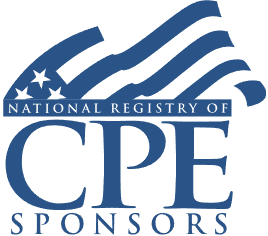Mastering IRC 457(f): Guidance for ERISA Counsel in Structuring Deferred Compensation Plans for Nonprofit Entities

Welcome! Strafford is now BARBRI! The expert courses you know from the trusted global leader in legal education.
Course Details
- smart_display Format
On-Demand
- signal_cellular_alt Difficulty Level
Intermediate
- work Practice Area
ERISA
- event Date
Wednesday, September 25, 2024
- schedule Time
1:00 p.m. ET./10:00 a.m. PT
- timer Program Length
90 minutes
-
This 90-minute webinar is eligible in most states for 1.5 CLE credits.
-
BARBRI is a NASBA CPE sponsor and this 110-minute webinar is accredited for 2.0 CPE credits.
-
BARBRI is an IRS-approved continuing education provider offering certified courses for Enrolled Agents (EA) and Tax Return Preparers (RTRP).
-
Live Online
On Demand
This CLE/CPE course will provide employee benefits, ERISA counsel, and tax advisers with a thorough and practical guide to deferred compensation for nonprofit and exempt organization executives and employees. The panel will discuss critical tax rules impacting the structuring of deferred compensation plans and define additional opportunities and challenges for exempt organization directors and professionals.
Faculty

Mr. Fosse focuses on all the tax, securities, corporate and accounting issues related to executive and equity compensation arrangements. He works with publicly traded, private, non-profit and government clients in the design, implementation and operation of domestic and international executive nonqualified and supplemental deferred compensation plans, as well as equity-based and other long-term incentive compensation arrangements. He regularly advises clients regarding handling employee benefit matters in corporate mergers, acquisitions, divestitures, initial public offerings and other corporate transactions.

Mr. Oringer is co-chair of his firm's ERISA and Executive Compensation group, and leads the firm’s national fiduciary practice in New York. He counsels clients on their employee benefit plans and programs, benefits-related tax matters and fiduciary issues arising in connection with the investment of employee benefit plan assets. His practice includes advising clients regarding ERISA and employee benefits generally, including 401(k) and other retirement plans as well as medical and other welfare plans. His advice to clients encompasses all aspects of corporate transactions and initial public offerings in which benefits and compensation issues play a central part.

Mr. Smith utilizes his in-depth background in employee benefits and executive compensation law to advise public and private companies on establishing and ensuring the continued compliance of tax-qualified defined contribution and defined benefit retirement plans and all forms of executive compensation arrangements. He counsels clients on employee benefits matters that arise during mergers and acquisitions, finding solutions, and helping the deals to move forward. He also works with various health and welfare plans and executive and equity-based compensation. These include incentive and non-qualified stock options, restricted stock awards, stock appreciation rights, employee stock purchase plans, profits interests, phantom equity, performance unit and bonus plans, SERPs and other excess benefit plans, and non-qualified deferred compensation plans.
Description
The regulations under Section 457(f) provide planning opportunities for nonprofit entities in structuring deferred compensation plans for executives. This has become particularly important with the 21 percent tax penalty on most tax-exempt organizations that pay their "covered employees" compensation that either exceeds $1 million for the taxable year or is treated as an "excess parachute payment."
Compensation that is no longer subject to a substantial risk of forfeiture (i.e., vested) as defined under IRC Section 457(f) will be included for calculating these amounts in the year the compensation vests, even if paid or taxed in a subsequent year.
Counsel and tax advisers for nonprofit entities will need to master the ins and outs of IRC Section 457(f) and the regulations to advise their clients on structuring compensation arrangements to maximize tax benefits for the executives and the organization and to minimize the amounts that will exceed the $1 million threshold or be treated as excess parachute payments.
A powerful tool is to defer compensation to a later period when the executive may have lower taxable wages. However, once a covered employee, always a covered employee, so post-termination payments may not even escape penalties.
Counsel and tax advisers must understand when compensation is subject to a substantial risk of forfeiture and when that risk lapses. In drafting these compensation agreements, counsel and advisers must understand the relationship between IRC Sections 457(f) and 409A so executives aren't subject to severe penalties for either a document or operational failure under the plan.
Listen as our experienced panel provides a critical analysis of IRS Section 457(f) regulations and implications of current tax rules, as well as offers guidance on opportunities and limitations in structuring executive compensation plans for exempt organizations.
Outline
- Introduction to IRC Section 457
- Exceptions to application of 457(f)
- Interaction between 457(f) and 409A guidance
- What is substantial risk of forfeiture and deferred compensation
- Noncompete covenants
- "Rolling risk of forfeiture"
- Separation pay plans
- The 21% excise tax on payments over $1 million or excess parachute payments
- Who is a covered employee
- What is an excess parachute payment
- Evaluating practical applications of 457(f) regulations
Benefits
The panel will review these and other key issues:
- Analyzing the rules that trigger the 21% excise tax on compensation above $1 million or excess parachute payments to covered employees
- Noncompete covenants regarding whether a substantial risk of forfeiture exists
- Planned vesting schedules and timing of cash payouts
- When is the deferral of the current base salary permitted
- Evaluating whether a plan falls under both 409A and 457(f)
- Opportunities and limitations in structuring compliant executive compensation plans for nonprofit organizations
NASBA Details
Learning Objectives
After completing this course, you will be able to:
- Understand rules that trigger the 21% excise tax on compensation over $1 million or excess parachute payments to covered employees
- Recognize the tax implications of planned vesting schedules and timing of cash payouts
- Ascertain when is the deferral of current base salary permitted
- Discern whether a plan falls under both 409A and 457(f)
- Field of Study: Taxes
- Level of Knowledge: Intermediate
- Advance Preparation: None
- Teaching Method: Seminar/Lecture
- Delivery Method: Group-Internet (via computer)
- Attendance Monitoring Method: Attendance is monitored electronically via a participant's PIN and through a series of attendance verification prompts displayed throughout the program
- Prerequisite: Three years+ business, legal or public firm experience at mid-level within the organization, providing tax planning and preparing complex tax forms and schedules for non-profit and exempt organizations; supervisory authority over other attorneys and advisers. Knowledge and understanding of non-profit and exempt organization structure, equity compensation in these entities, Section 409A elections; familiarity with equity compensation alternatives and IRC 457(f).

Strafford Publications, Inc. is registered with the National Association of State Boards of Accountancy (NASBA) as a sponsor of continuing professional education on the National Registry of CPE Sponsors. State boards of Accountancy have final authority on the acceptance of individual courses for CPE Credits. Complaints regarding registered sponsons may be submitted to NASBA through its website: www.nasbaregistry.org.

Strafford is an IRS-approved continuing education provider offering certified courses for Enrolled Agents (EA) and Tax Return Preparers (RTRP).
Unlimited access to premium CLE courses:
- Annual access
- Available live and on-demand
- Best for attorneys and legal professionals
Unlimited access to premium CPE courses.:
- Annual access
- Available live and on-demand
- Best for CPAs and tax professionals
Unlimited access to premium CLE, CPE, Professional Skills and Practice-Ready courses.:
- Annual access
- Available live and on-demand
- Best for legal, accounting, and tax professionals
Unlimited access to Professional Skills and Practice-Ready courses:
- Annual access
- Available on-demand
- Best for new attorneys
Related Courses
Recommended Resources
Getting the Most Out of BARBRI Resources
- Learning & Development
- Business & Professional Skills
- Talent Development
Navigating Modern Legal Challenges: A Comprehensive Guide
- Business & Professional Skills
- Career Advancement
